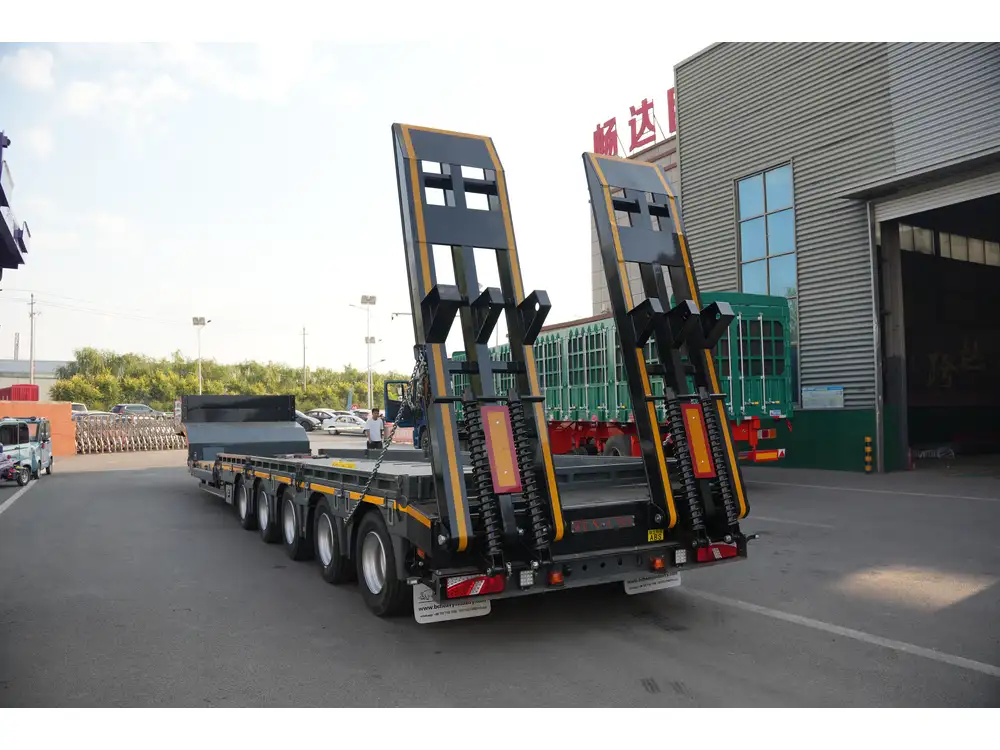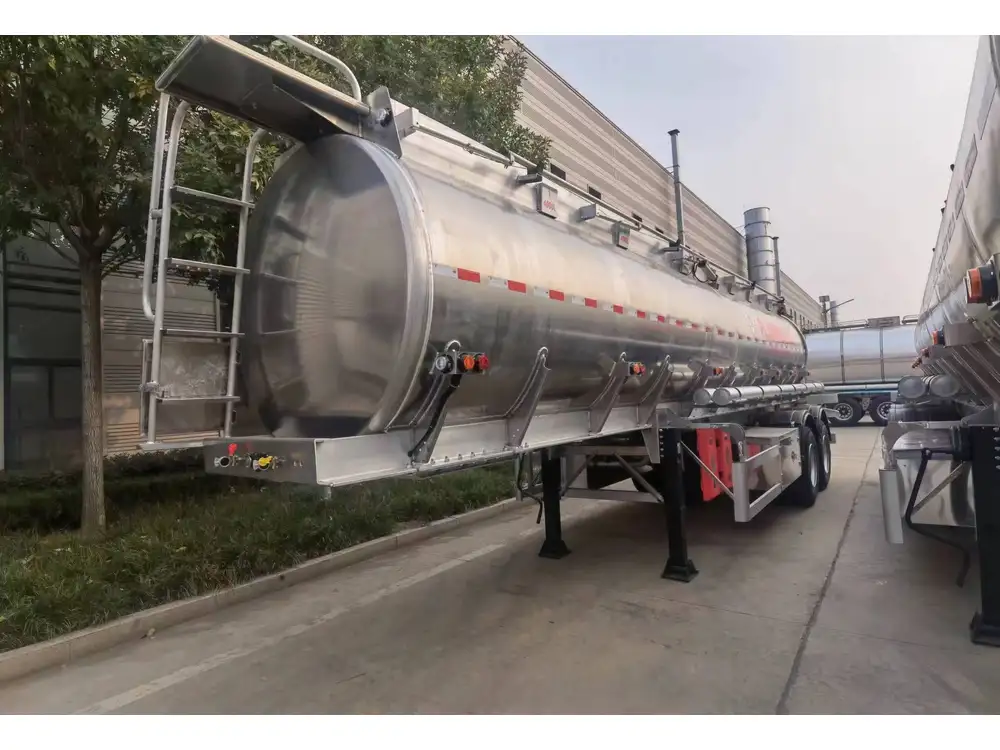Installing a winch on a gooseneck flatbed trailer can significantly enhance its utility, allowing for efficient loading and unloading of heavy equipment and materials. In this detailed guide, we will explore the essential steps and considerations necessary for an effective installation. Throughout, we will also highlight key considerations, best practices, and potential pitfalls to avoid, ensuring your setup is robust and reliable.
Table of Contents
- Understanding the Components of a Winch
- Selecting the Right Winch
- Preparing for Installation
- Step-by-Step Installation Process
- Maintaining Your Winch System
- Troubleshooting Common Issues
- Conclusion
Understanding the Components of a Winch
A typical winch system on a gooseneck flatbed trailer consists of several key components:
- Winch: The principal element that provides the mechanical advantage needed to lift heavy loads.
- Cable or Rope: The medium through which loads are pulled; synthetic ropes and steel cables are prevalent options.
- Mounting Plate: An essential base for the winch; it supplies structural integrity and ensures the winch is securely positioned.
- Remote Control: Facilitates operation from a distance, enhancing safety during loading tasks.
- Power Source: Winches can be powered electrically or hydraulically, depending on the application’s demands.

Components Illustrated
| Component | Description |
|---|---|
| Winch | Main device for lifting and pulling loads |
| Cable or Rope | Load-bearing medium, usually steel or synthetic |
| Mounting Plate | Base for securing the winch |
| Remote Control | Facilitates operation from a distance |
| Power Source | Electrical or hydraulic systems |
Selecting the Right Winch
Choosing the correct winch is critical and depends on several factors including:
- Load Capacity: Ensure the winch can handle the maximum weight you intend to lift or pull.
- Power Type: Decide between electric or hydraulic based on convenience and application type.
- Speed: Higher-speed winches can reduce the time taken for loading/unloading.
- Portability: Consider the ease of transport if the winch is intended for multiple trailers or locations.
Winch Models Comparison
| Model | Load Capacity | Power Source | Speed | Weight |
|---|---|---|---|---|
| Model A | 8,000 lbs | Electric | 10 ft/min | 75 lbs |
| Model B | 12,000 lbs | Hydraulic | 15 ft/min | 100 lbs |
| Model C | 15,000 lbs | Electric | 12 ft/min | 90 lbs |

Preparing for Installation
Before proceeding with the installation of the winch, thorough preparation is crucial to ensure a smooth installation process.
Required Tools
Gathering the appropriate tools is vital. Here’s a list of tools you should have handy:
- Wrenches and ratchet set
- Drill with bits
- Impact wrench
- Measuring tape
- Safety goggles and gloves
Safety Precautions
Prioritize safety by taking these precautions:
- Ensure the trailer is on a flat surface and securely braked.
- Wear safety gear to protect against falling tools or shifting loads.
- Do not work alone; having an extra set of hands can help with heavy lifting and critical tasks.

Step-by-Step Installation Process
Positioning the Winch
Identify the Installation Location: The winch should be positioned near the front of the trailer, ideally centered to ensure balance during operation. Leave enough room for cable or rope movement.
Check Alignment: Use a measuring tape to ensure consistent clearance from the edges of the trailer.
Mounting the Winch
Mark Drill Holes: With the winch in position, mark where the mounting holes will be drilled.
Drill Holes: Carefully drill holes into the mounting plate, ensuring they align with the winch base.
Secure the Winch: Place the winch on the mounting plate and use bolts to secure it tightly, ensuring no movement during operation.

Electrical Connections
Power Source Connection: Connect the winch power leads to the battery. Ensure positive and negative leads are connected correctly to prevent electrical issues.
Install Safety Switch: If applicable, install a safety switch to disconnect power when the winch is not in use. This helps prevent accidental operation.
Testing the Installation
Initial Test Run: Connect the winch to its power source and operate it with no load. Listen for unusual noises that could indicate misalignment.
Load Test: Gradually add a load that is within the winch’s specifications. Check for cable spool functioning and ensure the winch transports the load smoothly.
Maintaining Your Winch System
Proper maintenance prolongs the life of the winch and ensures safe operation. Regular tasks include:
Inspecting Cable or Rope: Check for frays or wear and replace if necessary.
Cleaning Components: Remove dirt or debris regularly to avoid damage.
Lubricating Moving Parts: Apply lubricant to gears and other moving components to reduce wear.
Testing Electrical Connections: Periodically check wire connections to prevent corrosion and ensure a solid power flow.

Maintenance Schedule
| Task | Frequency | Notes |
|---|---|---|
| Inspect Cable/Rope | Monthly | Replace if frayed |
| Clean Winch Components | Bi-weekly | Focus on exposed parts |
| Lubricate Moving Parts | Quarterly | Use appropriate lubricant |
| Test Electrical Setup | Annually | Ensure wires are intact and secure |
Troubleshooting Common Issues
Even with installation and maintenance, issues can arise. Here are common problems and their solutions:
Winch Does Not Operate
- Check Power Connections: Ensure wires are securely connected; inspect the battery.
- Inspect the Remote Control: If using a remote, check batteries and functionality.

Cable or Rope Fails to Wind Properly
- Misalignment: Examine the spool for right alignment; adjust if necessary.
- Overloaded Winch: Ensure the load does not exceed the winch’s capacity.
Winch Overheats
- Continuous Operation: Avoid running the winch for extended periods. Allow it to cool down.
- Insufficient Power Supply: Ensure the battery can support the winch operations.
Conclusion
Installing a winch on a gooseneck flatbed trailer is a straightforward but critical process that enhances the trailer’s versatility and efficiency. Through careful selection of components, meticulous installation, and ongoing maintenance, users can ensure a reliable winch system that meets their needs. Following the outlined steps will not only help during installation but set a solid foundation for effective future use, maximizing the trailer’s potential in various applications, from construction sites to recreational endeavors.
Having direct control over loading and unloading processes significantly enhances productivity and safety, making the investment in a quality winch a worthy addition to any trailer setup.



